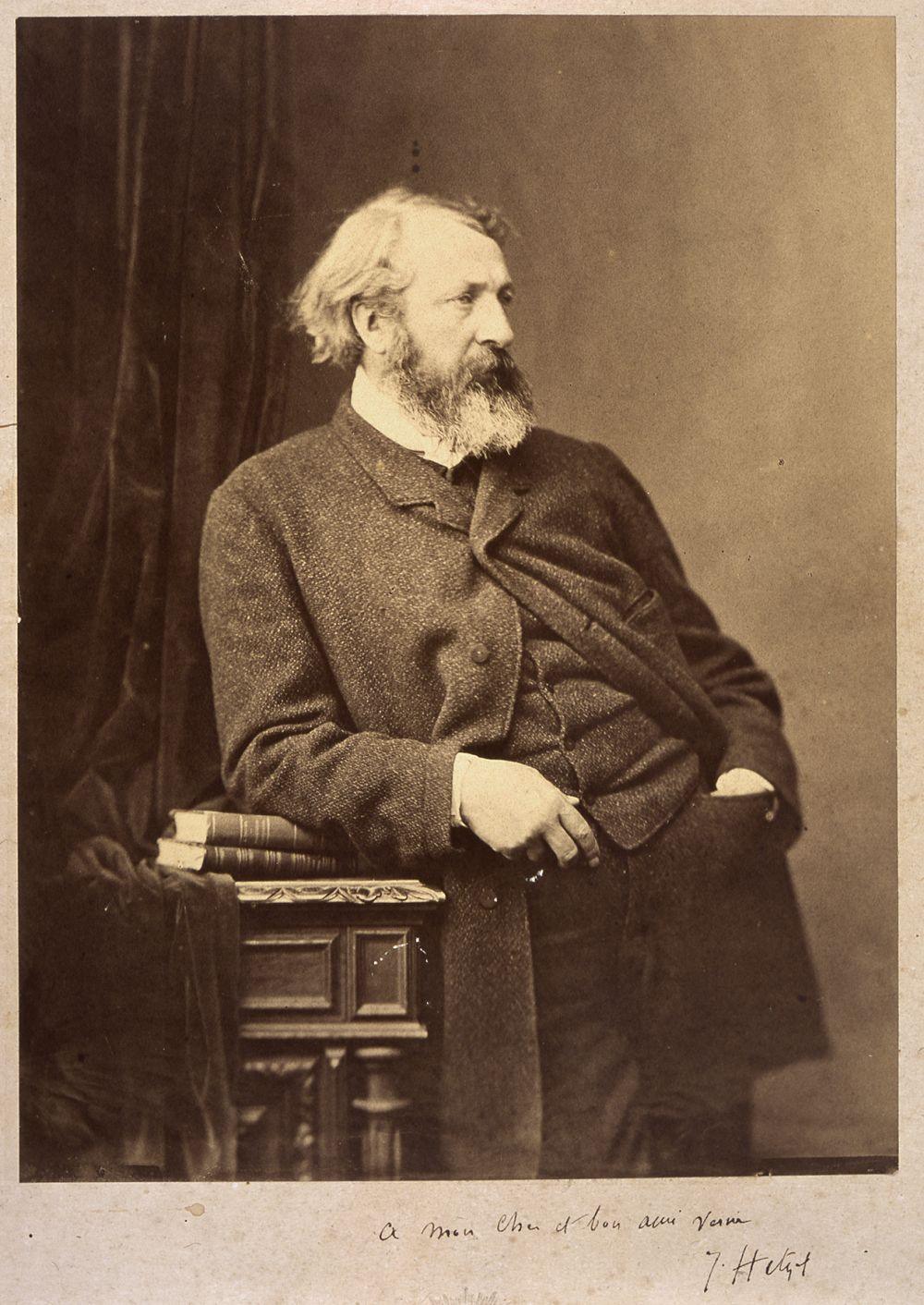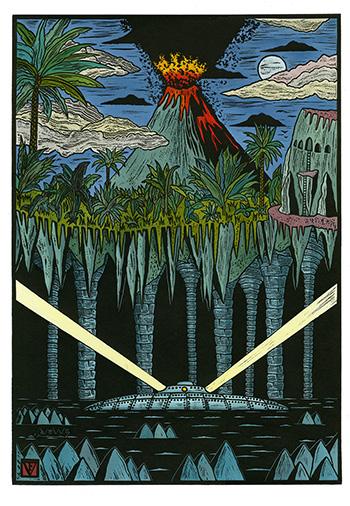Jules Verne’s Extraordinary Voyages are a work whose success was as much to do withits author’s qualities as with those of its publisher, Pierre-Jules Hetzel (1814-1886).
In an era when books are manufactured and disseminated on an industrial scale, Hetzel devotes himself to a thriving field: books for young people. A demanding businessman, he acquires the services of the best illustrators, engravers and printers, and surrounds himself with the most famous authors of his day: Honoré de Balzac, Victor Hugo, Alexandre Dumas, George Sand, Jules Verne.
Hetzel’s first meeting with Jules Verne in 1862 is decisive. Hetzel completes his educational work and becomes a major name in the publishing world. Jules Verne’s dream of becoming a writer comes true. The unique relationship the two men cultivate is expressed by reciprocal signs of admiration and incomprehension at one and the same time. Hetzel takes every opportunity to engage in debate with Verne on his novels’ plots and their protagonists’ characters, in order to get the very best out of them.
Such is the background story of the Extraordinary Voyages series. 62 novels and 18 short stories whose search forperfection of substance – the adventure stories – and form – illustrated books with cartonnage bindings – have made it a legendary body of work.

Jules Verne
Extraordinary Voyages
Collection of cartonnage bindings from original Hetzel editions
Paris, 1866-1914
Jules Verne’s Extraordinary Voyages cannot but call to mind those works with eye-catching decorated and gilded percaline covers and engraved illustrations published by Editions Hetzel: the Gift Books.
Cartonnage bindings “with bouquets of roses”, “with initials”, “with shell”, “with banner”, “with two elephants”, “with a portrait”, “with a golden globe”, “with a steamer”, “with acanthus leaves”… so many varieties of bindings, available in a range of bright colours, that were largely responsible for the commercial success and reputation enjoyed by Extraordinary Voyages.
Such Gift Books also contain remarkable illustrations, starting with the frontispiece, the initial image set opposite the novel’s title page.

Photographic portrait of Pierre-Jules Hetzel
with a dedication to Jules Verne
Circa 1870
Jules Verne
Letter to Pierre-Jules Hetzel
Paris, 25 April 1864
© Bibliothèque nationale de France collection
Exhibition print
Pierre-Jules Hetzel
Letter to Jules Verne
[Paris], 9 January 1877
© Bibliothèque centrale Louis Aragon collection, Amiens
Exhibition print
Jules Verne
Letter to Pierre-Jules Hetzel
Amiens, 15 October 1885
© Bibliothèque nationale de France collection
Exhibition print
The many letters exchanged between Jules Verne and Hetzel throughout their years of collaboration reveal how the author’s novels came to be , the roles played by each of them in their genesis and the evolution of their relationship.
At first, Verne clearly seems grateful to Hetzel: after some fifteen years of perseverance in the field of literature, the author finally receives a sign of recognition. He regards the publisher as a master, obeys instructions and acknowledges his own shortcomings. Letter dated 25 April 1864
Hetzel does not hold back in his criticism of the narrative’s style and the way the plot unfolds. For example, he refuses the suicide of Captain Hatteras, the eponymous novel’s hero, and rewrites the plot and protagonists’ roles in The Black Indies. Letter dated 9 January 1877
Despite the severity of the publisher’s method, Verne’s literary style emerges all the stronger for it.
With time and acquired experience, the author no longer gives in and starts defending his ideas. He counters Hetzel’s remarks with a well-ordered argument advocating his position. He demonstrates the merits of his fictional choices point by point while acknowledging the pertinence of some of the publisher’s observations. Letter dated 15 October 1885
A spirit of accommodation that usually leads Hetzel to make concessions in order to handle his author, who is now a celebrity.
